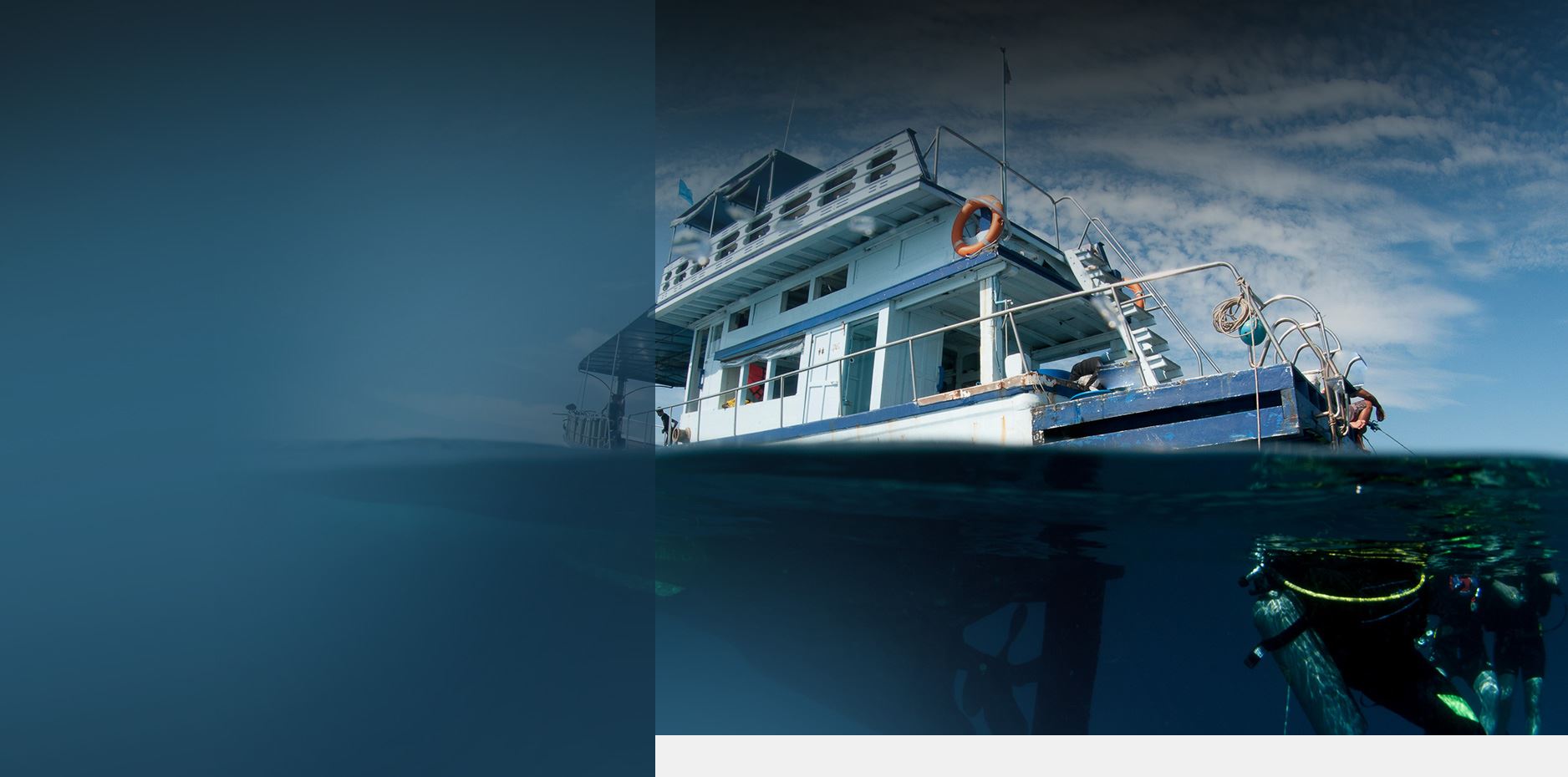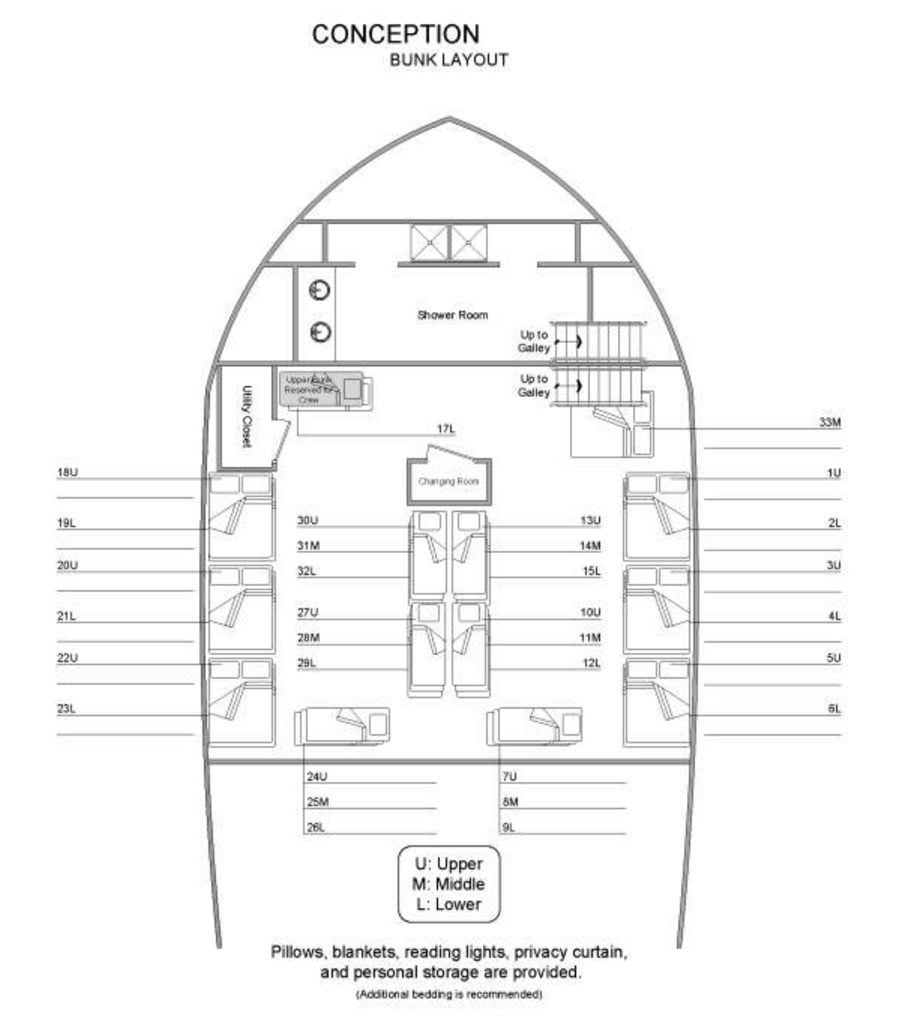
Conception Dive Boat Fire Investigation
Truth Aquatics Dive Boat Fire Near Santa Cruz Island Claims 34 Lives
On Sept. 2, 2019, the Conception, a Truth Aquatics dive boat, erupted in a predawn fire near Santa Cruz Island off the coast of Santa Barbara. All 33 passengers and one crew member below deck were killed in the fire. This is one of the deadliest recreational maritime disasters in recent history.
At around 3:30 a.m. on Labor Day, United States Coast Guard officials responded to a mayday call coming from the dive boat Conception. When they arrived, the vessel was completely engulfed in flames. Five crew members, who were apparently on the bridge when the fire started, were rescued by another vessel. All 34 other people on the scuba diving boat, likely asleep below deck when the fire started, perished.
“This is probably the worst-case scenario you can have,” said Santa Barbara County Sheriff Bill Brown. “It’s a vessel on the open sea in the middle of the night; it’s 3:30 in the morning … The sleeping compartment is on the bottom of the ship and they would be sound asleep … You couldn’t ask for a worse situation.”
At Wisner Baum, we can help victims of dive boat accidents and their families seek appropriate compensation. Call (855) 948-5098 today for a consultation.
Surviving Crew Members Interviewed by Investigators
The five surviving crew members reportedly spoke with investigators and gave detailed interviews about the tragedy. According to officials, four of the five surviving crewmembers were given alcohol tests and passed those tests. The fifth was not tested because he was being taken to the hospital; reportedly, he broke a leg when escaping the fire. All crew members were given drug tests.
Investigators will analyze documents and recordings linked to Conception, including Coast Guard recordings, 911 calls, maintenance documents, training documents, Conception’s inspection history and any manuals that exist. The vessel was reportedly not required to have a sprinkler system installed based on its size.
All Crew Members Were Asleep When Tragedy Struck
On Sept. 12, 2019, the National Transportation Safety Board (NTSB) issued its preliminary report into the Conception dive boat tragedy. The report details an egregious safety lapse, noting that all crew members onboard Conception—five behind the wheelhouse and one in the bunkroom—were asleep when the fire broke out, violating rules requiring that a night watchman be awake at night to alert everyone on board to dangers.
The Code of Federal Regulations, Title 46. Shipping, Chapter I. Coast Guard, Department of Homeland Security (Refs & Annos), Subchapter T. Small Passenger Vessels (Under 100 Gross Tons) (Refs & Annos), Part 185. Operations (Refs & Annos), Subpart D. Crew Requirements, states:
“The owner, charterer, master, or managing operator of a vessel carrying overnight passengers shall have a suitable number of watchmen patrol throughout the vessel during the nighttime, whether or not the vessel is underway, to guard against, and give alarm in case of, a fire, man overboard, or other dangerous situation.”
The report notes that the distress call came from Conception at about 3:14 a.m. PST on Monday, September 2, 2019, on the last night of its three-day excursion. Prior to the fire, the ship showed no signs of mechanical or electrical issues, according to three crew member interviews. After waking up to a fire, five crew members attempted to access passengers below but were unable to do so due to fire and thick smoke. The crew members made their way to a nearby boat and two returned to search for survivors. The Coast Guard and fire departments arrived to fight the fire and perform a search and rescue, but no additional survivors were found, and the boat ultimately sank into about 60 feet of water.
The Coast Guard later declared the accident a major marine casualty. The NTSB is the lead federal agency investigating the tragedy, with the Coast Guard, Truth Aquatics, Inc., Santa Barbara County Sheriff’s Office, and Santa Barbara County Fire Department named as parties to the investigation.
Conception was built in 1981 and was manufactured from wood and fiberglass. At the time of the fire it was carrying 39 people—six crew and 33 passengers. The bunkroom, where passengers slept, could be accessed from a ladderwell and an emergency escape hatch. The boat had two locally sounding smoke detectors in the bunkroom.
Captain Issued Mayday Call
The captain reportedly made a mayday call from the boat at 3:15 am, before he and the crew left the Conception. In an interview with the NTSB, one crew member told investigators that he awoke because of a noise in the galley area and went to investigate. He came upon flames above the guests’ sleeping area. Crew members say they attempted to use a ladder to reach passengers, but flames blocked them.
They then tried to open the galley’s double doors, but fire again prevented them from doing so. At that point, the crew members jumped ship. Two crew members swam back and got a small utility boat and two others were rescued by another boat.
Witness Called Scenario “Horrific”
Shirley and Bob Hansen were on their boat—the Grape Escape—near the Conception and witnessed the inferno. They had been sleeping when they heard banging on the hull of their boat and knew right away someone was in distress.
“It was horrific, the pounding,” Shirley Hansen said. “Our boat is very well made. Having that sound come through [showed] they were very in need of help.”
Hansen described the crew as distraught, with one saying his girlfriend was still on the Conception. “I could see the fire coming through holes on the side of the boat,” Bob Hansen said. “There were these explosions every few beats. You can’t prepare yourself for that. It was horrendous.”
Hansen later told a reporter the fire was too big for them to do anything to help. The smoke was so thick that Shirley Hansen required her inhaler for her asthma.
Early Investigation Suggests Serious Safety Lapses on the Conception
Although officials are still investigating what caused the tragic fire on board the Conception, preliminary inquiries suggest there were serious safety issues on the boat that could have unnecessarily put passengers’ lives in danger. According to reports, the Conception did not have a “roaming night watchman” who was awake and able to alert passengers to dangers. One crew member was reportedly awake and in the galley until 2:35 a.m., but then went upstairs to the wheelhouse after checking the stove to ensure it was cold.
At some point after that the same crew member heard a noise and went to see if someone had tripped, which is when he discovered the fire.
Investigators are also looking into whether the crew received proper training to deal with emergency situations and whether the passengers were given a safety briefing before their voyage. Crew members told officials that the fire was too intense to save anyone below the deck.
The crew members also said they did not hear any smoke alarms. Speaking with reporters, NTSB member Jennifer Homendy said the smoke alarm on the Conception was a simple one that could be bought at a hardware store. The Vision, a boat similar to the Conception, also has only one smoke alarm that is not wired into any larger alarm system.
Crew members have speculated that an overload of photography equipment and batteries on the boat that were charging may have triggered the fire but investigators have not confirmed that theory. One of the surviving crew members has said he believes the fire started in the galley where the cameras and cellphones were plugged in to charge.
Another theory is that the fire might have been started by a lithium battery in the boat’s bunk area. Under Federal Aviation Administration (FAA) laws, devices that use lithium batteries must be turned off if they are in checked luggage because of the hazards associated with them. Some dive boats require passengers to charge their lithium-battery devices on the deck because the deck has fewer hazardous materials and more equipment to stop a fire from spreading.
At Wisner Baum, we are investigating several issues that could be possible causes of the Truth Aquatics Conception boat fire:
- Were mechanical and/or electrical defects involved in starting and propagating the fire?
- What was the passenger warning/instruction and evacuation plans and were they followed by the crew?
- Were fuel sources properly secured?
- Were the passengers given appropriate pre-trip advisories describing safety procedures and evacuation routes?
- Were exits properly marked and free of obstruction?
Passengers Say They Were Not Properly Briefed on Safety Procedures
Among the issues investigators will look into is whether or not passengers received adequate safety briefings before their voyage on Conception. Of concern is that some passengers on previous sailings said they had no idea there was an escape hatch from below deck and further said they felt the captain’s initial safety briefing was not thorough.
Among the complaints was that a safety briefing was not given until passengers reached their destination the day after they boarded the boat, that briefings lasted only five minutes, and did not include mention of fire extinguishers or escape hatches, and that passengers were not told what to do or where to go in case of emergency.
US Coast Guard Issues Safety Bulletin on Lithium Batteries
The US Coast Guard has issued a safety bulletin recommending commercial boat owners and operators limit the unsupervised charging of any devices that use lithium-ion batteries. Although the cause of the fire has not been determined, early reports suggest the possibility that a lithium battery may have started the fire, given the high number of cameras, phones, and batteries on the boat.
The Coast Guard also recommended boat operators review their emergency duties, update records regarding emergency drills and equipment maintenance, and conduct a check to ensure all emergency escapes are clear and well-marked.
Conception Liveaboard Scuba Dive Boat Design
According to Conception’s bunk layout on the Truth Aquatics website, the vessel only had one staircase leading up to the deck, located near the galley. If the ignition point was near it, the fire might have blocked anyone below from accessing the deck. Likewise, the crew could not have reached those below by this route.
Were passengers below deck trapped with only two possible points of egress: the stairs and a hatch? In either case, it is likely that only one person at a time could have used either of those means, assuming one or both was actually available to them during the conflagration. Was the vessel equipped with a fire alarm system or automatic fire suppression systems other that at the engine? Was there lighting that could have guided passengers to escape routes? Was the hatch of sufficient size and accessibility to be useful in the event of emergency? Was at least one crew member awake and keeping watch so as to take quick action in the event a fire broke out?

Touring the scuba boat Vision, which is similar to though slightly larger than Conception, National Transportation Safety Board (NTSB) member Jennifer Homendy said she was “taken aback” by the small size of the vessel’s emergency escape hatch. Homendy noted she and a team of investigators turned off the lights on Vision and had difficulty accessing the emergency hatch. She further stated they could not find the light switches. Both the staircase and the emergency escape hatch were blocked by fire, making escape from Conception impossible for passengers.
What Caused the Truth Aquatics Dive Boat Fire?
Investigators from the Santa Barbara County Sheriff and the National Transportation Safety Board (NTSB) are investigating the Truth Aquatics Conception fire. While the official cause of the Conception fire (or causes) will likely not be known for months, Wisner Baum attorney Clay Robbins III believes the investigation needs to address fundamental questions to give the victims’ families the answers they deserve.
Mr. Robbins is a veteran trial attorney with decades of experience litigating complex cases. He is currently representing several passengers injured while on a lava boat tour in Hawaii that ventured too close to an active lava flow from the Kilauea volcano in July 2018. Many passengers were injured when lava bombs rained down on them. He was also a certified diver for 20 years and conducted dozens upon dozens of dives either on his own boat or with outfits like the one that chartered the Conception.
“In the Conception dive boat fire,” Robbins says, “there are fundamental questions that need to be answered:
- What caused the dive boat fire?
- What are the reasons people aboard the Conception died?
“Just because something caused the Conception fire, that doesn’t necessarily mean people had to die. Did they die from an explosion? Fire? Smoke inhalation? There are many questions that need to be answered. The origin of this fire may well have been leakage of volatile gas. Where did it start? In the galley? In the engine compartment? If there was a leak, should there have been a warning the moment the leak sprung? Was the boat equipped with a warning for gas, whether diesel, propane, or butane leakage, and if not, why not?”
The possibility of a lithium battery spark causing this fire is one of many factors our team will be investigating. From a product liability legal perspective, we want to focus on:
- The cause of the fire and its immediate conflagration
- Ignition sources
- Electrical components
- Flammable accelerants
- Suppliers of materials that may have accelerated the fire
- The boat’s possible defective design
- Emergency exit access
- Sleeping configuration
- Emergency lighting
- Fire alarms
- The pre-trip safety briefing
As for Conception’s design, Wisner Baum lawyer Timothy A. Loranger recalled his experience as a passenger aboard the ship, noting how precarious it would be for passengers to escape a fire with only two points of egress: stairs and a hatch.
“The lack of another egress point from the guest quarters below deck seems like a glaring safety weakness,” says Loranger, who served on the trial team in the Seattle duck boat accident litigation. “I can’t even imagine how dozens of people in such tight quarters would be able to safely exit a smoke-filled cabin in the dead of night.”
California Boat Fire Victims
Following are the 34 victims who were aboard the Conception, a California scuba dive boat (The information following each name is based on what is currently available to the public):
- Diana Adamic – An avid diver and Humane Educator at Santa Cruz County Animal Shelter, Diana met her husband, Steve Salika, while working at Apple.
- Juha Pekka Ahopelto – A 50-year-old from Sunnyvale.
- Neal Baltz – An electrical engineer, Baltz lived in southern Phoenix with his longtime girlfriend, Patricia Beitzinger, who also perished in the Conception scuba diving boat fire.
- Patricia Beitzinger – Patricia and her boyfriend, Neal, were avid travelers who took diving trips to Micronesia and the Caribbean Netherlands.
- Kendra Chan – A 26-year-old biologist with the US Fish and Wildlife Service from Los Altos.
- Scott Chan – American High School (Fremont) physics teacher, also from Los Altos. Mr. Chan was on the scuba diving excursion with his daughter, Kendra.
- Adrian Dahood-Fritz – A 40-year-old research scientist with California’s Ocean Protection Council and avid photographer who moved to Sacramento from Taylor, Texas 15 months before the tragedy.
- Sanjeeri Deopujari – A 31-year-old dentist from Stamford who was married to Kaustubh Nirmal.
- Justin Caroll Dignam – A water polo coach from Anaheim Hills who founded a payroll company and leaves behind a wife and two children.
- Berenice Felipe – A friend of Tia Salika, Berenice was a student at Pacific Collegiate School in Santa Cruz.
- Lisa Fiedler – A hairdresser, nature photographer and experienced diver.
- Kristy Finstad – A diving instructor and marine biologist, Finstad ran Worldwide Diving Adventures with her husband, Bill. She was leading the Labor Day scuba tour.
- Andrew Fritz – A 40-year-old photographer and photography teacher who moved to Sacramento from Taylor, Texas, with his wife, Adrian Dahood-Fritz.
- Dan Garcia – An Apple employee and a diving enthusiast from Berkeley, CA, he was on the boat with his girlfriend Yulia Krashennaya.
- Marybeth Guiney – An ocean enthusiast dedicated to protecting sharks and other sea life. Marybeth lived in the same Santa Monica condominium complex as Charles McIlvain and worked as a sales director.
- Yuko Hatano – A 39-year-old from San Jose.
- Yulia Krashennaya – A product manager at Spiralinks and an avid diver, the 40-year-old was on the trip with her boyfriend, Dan Garcia.
- Allie Kurtz – A 25-year-old from Cincinnati, Kurtz left the movie industry to take up her passion of scuba diving. Kurtz was a confirmed crew member on board the Conception.
- Xiang Lin – A partner at Acorn Summit Ventures who focused on artificial intelligence and loved mountain climbing and scuba diving.
- Charles “Chuck” McIlvain – Known for his work on films including “Spider-Man” and “Green Lantern,” Chuck was a visual effects designer for Walt Disney Imagineering. Chuck loved diving, mountain biking, and snowboarding.
- Carrie McLaughlin – A senior software engineer at Brilliant, based in San Francisco, and coworker of Kristian Takvam.
- Kaustubh Nirmal – A business analyst at Merrill Lynch in New York City, the 44-year-old lived in Stamford with his wife, Sanjeeri Deopujari.
- Angela Quitasol – A 7th grade science teacher at Sierra Middle School in Stockton and Michael Quitasol’s daughter.
- Evan Quitasol – A former Kaiser nurse and Michael Quitasol’s daughter.
- Michael Quitasol – A nurse who worked at Kaiser hospitals in Modesto and Manteca. Michael, his three adult daughters (Evan, Nicole and Angela), and his wife (Fernisa Sison), were on the Conception scuba dive excursion to celebrate his birthday.
- Nicole Quitasol – Michael Quitasol’s daughter who lived and worked in the San Diego area.
- Steve Salika – A senior manager at Apple who worked for the company for 30 years. Steve was aboard Conception with his wife, Diana Adamic, their daughter, Tia, and Tia’s friend from school, Berenice.
- Tia Salika – One of the youngest to perish in this tragedy, Tia was reportedly celebrating her 17th birthday on the Conception. She was a student at Pacific Collegiate School in Santa Cruz.
- Sunil Singh Sandhu — A citizen of Singapore who worked in Northern California as a senior scientist at PointCloud Inc.
- Fernisa Sison – Like her husband, Michael Quitasol, Fernisa was a nurse who worked at the Kaiser medical offices in Stockton.
- Ted Strom – A staff physician at the Memphis Veterans Affairs Medical Center who was also an associate professor at the University of Tennessee Health Science Center.
- Kristian Takvam – A vice president of engineering at Brilliant and coworker of Carrie McLaughlin.
- Wei Tan – A 26-year-old from Singapore who lived in California and worked as a data scientist for Evidation Health.
- Vaidehi Williams – An employee of the Soquel Creek Water District who gave presentations about water conservation to students and was a wife and mother of two.
Contact Wisner Baumat (855) 948-5098 today if you need to discuss boat fire injury or wrongful death claims.
Our Case Results

-
$265 Million Settlement Fatal Train Crash
In 2016, Wisner Baum attorney Timothy A. Loranger and six other attorneys in the Plaintiffs’ Management Committee were able to secure a $265 million settlement for victims of the 2015 Amtrak 188 derailment in Philadelphia, one of the largest in the U.S. for 2016.
-
$14 Million Settlement A Major US Plane Crash
Wisner Baum obtained a $14 million settlement for the death of a passenger in a major US plane crash.
-
$12 Million Settlement Helicopter Crash
Wisner Baum secured a $12 million settlement for a passenger who was injured in a helicopter crash.
-
$10 Million Settlement A Major Foreign Plane Crash
Wisner Baum obtained a $10 million settlement for the death of a passenger in a major foreign plane crash.
-
$2.0 Billion Verdict Personal Injury
In May of 2019, the jury in the case of Pilliod et al. v, Monsanto Company ordered the agrochemical giant to pay $2.055 billion in damages to the plaintiffs, Alva and Alberta Pilliod, a Bay Area couple in their 70s.
-
$80 Million Verdict Personal Injury
Wisner Baum attorneys served on the trial team in the case of Hardeman v. Monsanto Company, which resulted in an $80 million jury verdict for the plaintiff, Edwin Hardeman.

Client-Focused Representation
REVIEWS & TESTIMONIALS
We believe our track record speaks for itself. But you don’t have to take our word for it. See what our clients have to say about working with us.
-
"I Can’t Imagine a Better Law Firm"
Multiple lawyers recommended Wisner Baum to me and I have been consistently impressed with the quality of their work.
- Best Law Firms Survey -
"They Are About Changing the Systems..."
Wisner Baum are not only amazing attorneys but more importantly, they are activists. They are about changing the systems which got us into trouble in the first place. They understand their role in the process of making change.
- Kim Witczak -
"Top Legal Minds in the Country"
The Wisner Baum firm has some of the top legal minds in the country; they are driven, determined, trustworthy, ethical and passionate.
- From Best Lawyers® Best Law Firms





